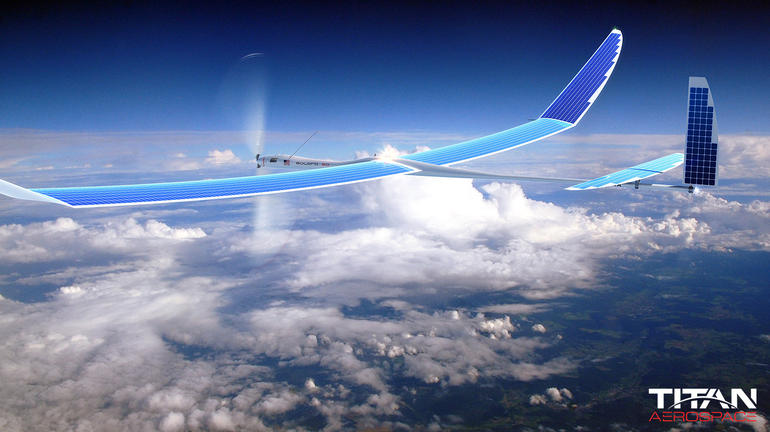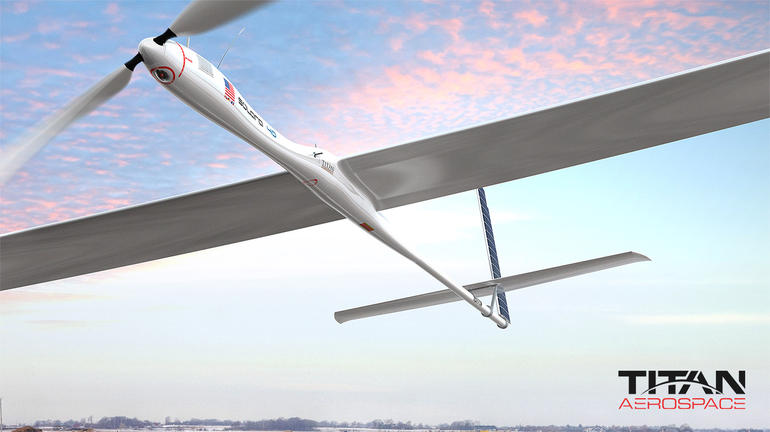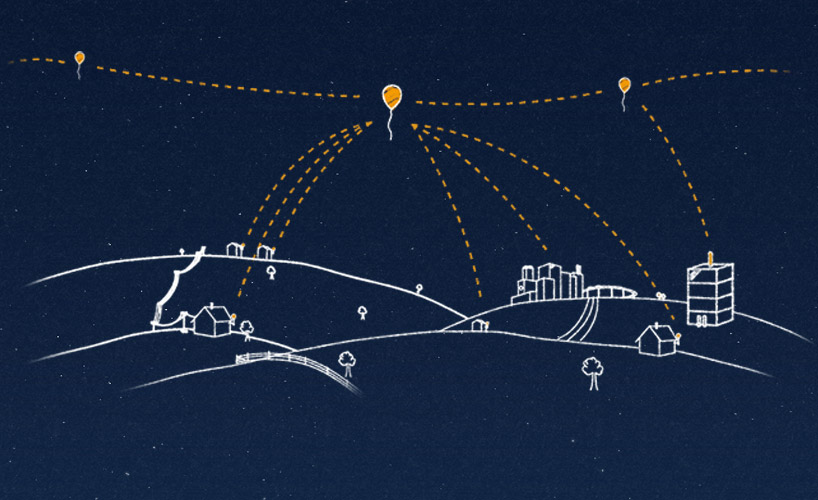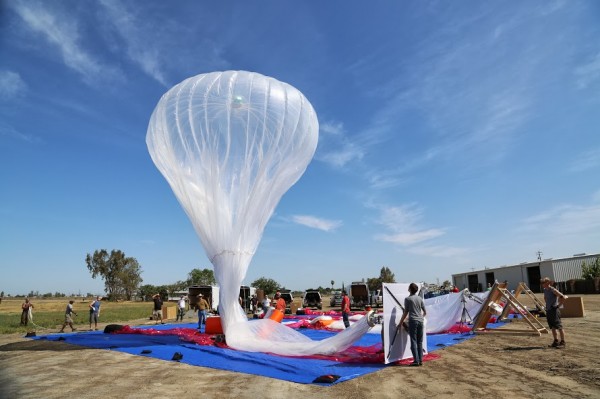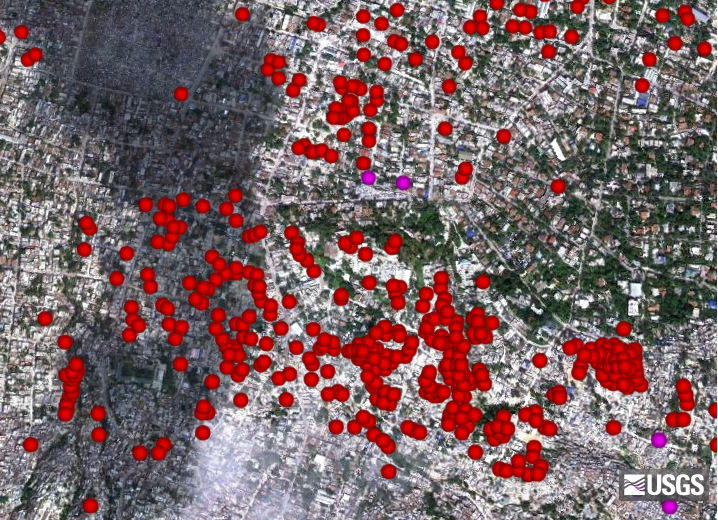Why Did Google Just Acquire An Aerospace Company?
Google has reportedly acquired aerospace company Titan, which was originally sought by Facebook. The fight may be about who provides internet, and who has access to the best high altitude imagery services.
Google has acquired Titan Aerospace, a company originally sought by Facebook as a means to bring Internet to remote parts of the globe
Google Inc. said Monday it agreed to buy Titan Aerospace, a startup maker of high-altitude drones, as the Internet search giant adds more aerial technology to collect images and get more of the world's population online.
Google didn't disclose a purchase price for Titan, of Moriarty, N.M., whose solar-powered drones are intended to fly for years, but the deal comes after Facebook disclosed its own purchase of a Titan Aerospace competitor in U.K.-based Ascenta for its globe-spanning Internet plans, for $20 million.
Titan and its roughly 20 employees will stay in New Mexico and the company will continue to be run by Chief Executive Vern Raburn, a technology-industry veteran who previously headed Symantec Corp. and Microsoft Corp.'s consumer-products division.
Formed in 2012, the company has been developing two models of unmanned aerial vehicle that are designed to stay aloft continuously for as long as 5 years
Titan’s thin craft look somewhat like a dragonfly covered with solar cells, and the company claims it can transmit data to the ground from heights nearly twice as far above the ground as the elevation most passenger airlines cruise at.
forbes.comLast November, Titan named Vern Raburn as its CEO, who was once CEO of Symantec and involved in the early years of Microsoft, but more recently helped to pioneer a new segment of the aviation industry with Eclipse Aviation, another Albuquerque area startup that made the first very lightweight jets.
The Eclipse star crashed and burned just as quickly as it rose. After sinking over a billion dollars into the development of the original Eclipse 500 jet, the company was taken down by the economic crash of 2008 and the recession that followed, eventually going bankrupt in 2009.
forbes.comAn artist rendering of the Solera 50, the smaller of two Titan Aerospace drones that -- with a wingspan of 164 feet -- will be slightly larger than a Boeing 767.
Image via cbsistatic.comGoogle will be using Titan Aerospace’s expertise and tech to contribute to Project Loon, the WSJ reports
Google said the Titan team will work closely with Google's Project Loon, which is building large, high-altitude balloons that send Internet signals to areas of the world that are currently not online. Titan may also work with Makani, another early-stage Google project that is developing an airborne wind turbine that it hopes will generate energy more efficiently.
Google, like Facebook is interested in being an innovative internet provider. Their “Project Loon” envisions a network of balloons to deliver internet throughout the world. Project Loon began with a pilot test in June 2013, when thirty balloons were launched from New Zealand’s South Island and beamed Internet to a small group of pilot testers. The pilot test has since expanded to include a greater number of people over a wider area.
forbes.comIt’s possible Google sees their acquisition of Titan as a way to advance Project Loon, while also enhancing their imagery capabilities. Project Loon’s goal for 2014 is to establish a ring of uninterrupted connectivity around the 40th southern parallel, so that pilot testers at this latitude can receive continuous service via balloon-powered Internet. With Titan’s drones, Google could provide connectivity over longer distances, connecting their ring of internet balloons to other rings in remote areas.
cnet.comMeanwhile, according to a statement by a Google spokesman:
"It's still early days, but atmospheric satellites could help bring internet access to millions of people, and help solve other problems, including disaster relief and environmental damage like deforestation."
“When manufactured, it would have 3,000 solar panels producing about 7 kW of electricity and would be above the clouds, so it would be exposed to sunlight constantly during daylight hours,” the company said in a news release. “One is scheduled for completion next year.”
wtma.comAnd, so that’s not all the Titan drones can help Google with, however. As the drones may also be useful in Google’s mapping services too.
If Google can operate its own atmospheric drones, it will be the equivalent to them operating their own satellites, which means more rapid updates to Google Maps and Google Earth with near real-time information such as weather updates.
Each red circle on this Google Earth map represents a building that collapsed after the Haitian Earthquake in January 2010. This visual data is essential to relief workers so that they can adequately allocate resources to regions that are most in need.
Image via duke.eduLast week, the Silicon Valley Business Journal reported that Google was interested in expanding their imagery capabilities to enhance their Google Earth product. According to that report, Google was not only looking at drones like those made by Titan, but was also looking at satellite company Skybox Imaging.
forbes.comSkybox “develops satellites that are smaller and cheaper than traditional satellites, allowing the company to launch and maintain a larger network of them. This allows Skybox to capture images of the Earth that are much more up-to-date than current images, which would seem to line up well with Google’s mapping objectives and Google Earth.”
